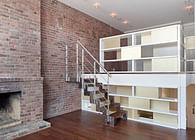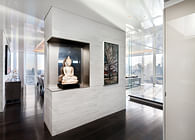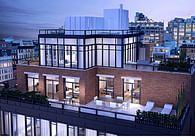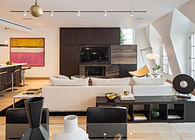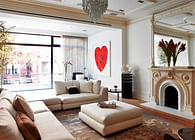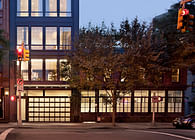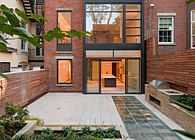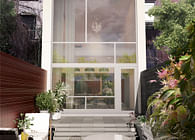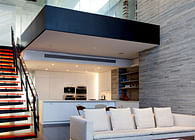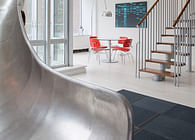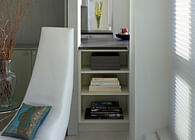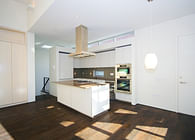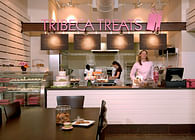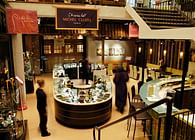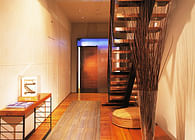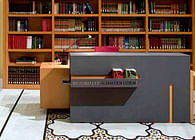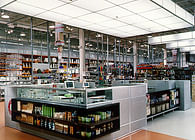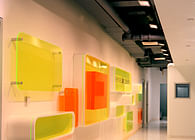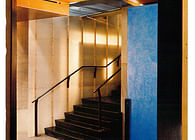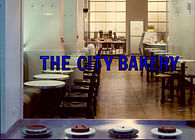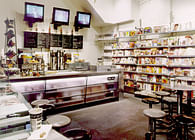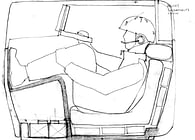
New York, NY
This EDC/Parks Department-sponsored project involves the reclamation of a series of abandoned piers in Bush Terminal, Brooklyn. The site – with views to industry both defunct and resurgent, active maritime shipping lanes and Lady Liberty -- will become a public park with expansive lawns, reclaimed marshlands and tidal pools, ball fields, and recreational and educational facilities.
Long-term plans for the park include a café/restaurant and environmental learning center, but the first structure, designed by TCA, is a 1,200 sf comfort station which will house public restrooms, a small administrative office, and storage for sports teams and the Parks Department maintenance crews. TCA’s role was originally as Architectural Consultant to the office of Donna Walcavage, which has since been purchased by EDAW, who is now managing the project.
For Turett, the challenge was to create a utilitarian structure in a field, the lone architectural element of the park, while deferring to the industrial and natural context, painstakingly reclaimed and rehabilitated by the Parks Department. And the facility would need to be as environmentally sensitive, and as economical to build and maintain as possible. The immediate surroundings presented a solution in both the abandoned remnants of former industry and the active operations along the waterfront: shipping containers could be efficiently procured from surplus, refined economically off-site, and repurposed for the park. A symbol of the past, a nod to aspirations for renewal, and an object lesson in the same adaptive reuse that are the park’s raison d’être.
The containers are bound side-to-side to form two volumes that shift along their long axis; they are adapted internally to house all program elements . The tension between expressing the containers as found industrial objects, and refining or even concealing their origins, served as the launching point for subsequent design decisions. To enable the construction to address the generous scale of the park, a butterfly-shaped roof adds height and unifies the overall assembly into a single dynamic gesture, also bringing natural light through a triangular clerestory; exposed corrugated skins and intact container doors and details emphasize the original dimensions and materials of the modules themselves.
TCA met or exceeded the prescriptions of PlaNYC, the city’s sustainability program. The sweeping roof will be fully planted with “LiveRoof”, a low-maintenance sedum system, to cool and insulate the interiors and minimize storm water runoff. Three elegant vertical-axis wind turbines mounted to the containers will help to supply electrical needs. Both will be dramatic demonstrations of sustainable efforts in a park dedicated to eco-education.
TCA also carefully selected materials for sustainability, ease of maintenance, and appeal. “Accoya wood”, an engineered wood product made from a range of sustainable species, is specified for decks, benches, and for the deep eaves, providing sheltered outdoor space and a platform for views into the park. The wood is non-toxic, 100% recyclable and naturally renewable; source-certified sustainable; and offers the highest available durability and resistance to fire and pests. Brightly colored glazed ceramic tiles line the bathroom interiors.
Working with the Parks Department demanded a high level of collaboration, both with a sprawling team of designers and engineers as well as with the community of stakeholders in the long-term success of the project for educational and recreational purposes. TCA navigated the needs of all interested parties, creating durable, usable architecture with rhetorical weight and popular appeal.
Status: Built
Location: Brooklyn, New York City
Firm Role: Architect



